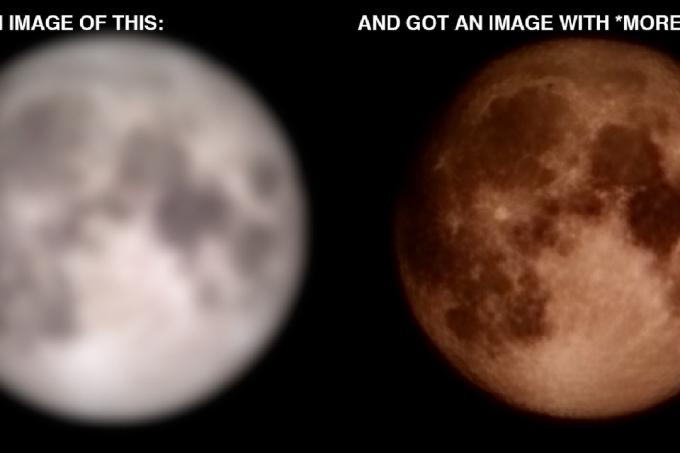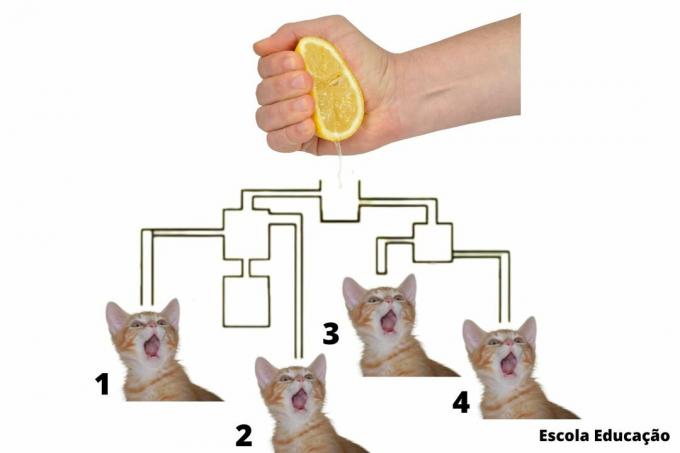Cobalt is a metal whose symbol is Co., has atomic number 27 and approximate atomic mass of 59 a.mu.u (atomic mass units). It is in fourth period and family 9 gives Table Periodic. This element was isolated for the first time as a pure metal by the Swedish chemist Georg Brandt, in the year 1735, based on enamel ore.
It is estimated that humanity has been using cobalt for about five thousand years based on the analysis of Egyptian ceramics and Persian glass. Nowadays, cobalt salts are still used in the manufacture of pigments for ceramics, while their metallic form is explored in the metallurgical industry for the production of types of steel. Cobalt oxides can be used as catalysts in the chemical industry.
Read too: Niobium - metal with various industrial and commercial applications
Cobalt Summary
It is a grayish white metal.
It has atomic number 27 and atomic mass of 59 a.m.u.
It can occur in the +2 and +3 oxidation states.
It was isolated by Swedish chemist Georg Brandt in 1735.
Widely used for creating inks and pigments.
It is present in several metal alloys.
It is present in vitamin B12.
Cobalt properties
Symbol: Co
Classification: outer transition metal
Pastaatomic: 59 u.m.a
Numberatomic: 27
electronegativity: 1,88
isotopes: 59Co (natural) and 60Co (synthetic)
PointinFusion: 1495 °C
Pointinboiling: ~2900°C
electronic configuration: [Air] 4s2 3d7
Density: 8900 kg/m³
Cobalt Characteristics
Cobalt is a grayish white metal with magnetic and physical properties similar to iron and to nickel. It can occur in the +2 and +3 oxidation states, but in most cases it occurs in the +2 oxidation state.
cobalt is stable in air and inert and does not react with Water, but can be attacked by acids.
It is a relatively rare element, occurring in the range of 0.001% to 0.002% of the earth's crust, being considered the 30th most abundant element of the crust. It naturally occurs in over 200 minerals, such as esmaltite and cobaltite, but it is almost always found in combination with other elements.
cobalt history
cobalt ores already have been used by humans for about five thousand years. They have been found in Egyptian pottery artifacts, Persian glass, and Chinese glass and porcelain from the Tang (618-907) and Ming (1368-1644) dynasties.

The name cobalt derives from the German mythological term kobold, a spirit that could materialize in the form of animals or goblins. He would be playful, moody or mean. A type of kobold it was famous for haunting underground places like mines.
the cobalt almost always occurs in minerals associated with others. metals, like the copper. Thus, cobalt ores, hitherto unknown, began to be used in the manufacture of glass. When treated with acids, this gave them a bluish color, something known copper ores also did.
However, when added to glass, this ore also guaranteed a bluish color, something that copper ores did not do. As such behavior was associated with something new and mysterious, Swedish chemist Georg Brandt called it cobalt, based on the name kobold. Nowadays, this mineral has already been determined and called esmaltite.
It was Brandt who, in 1735, managed to isolate metallic cobalt of enamel, and so the discovery of cobalt is credited to him.
Read too: What are the names of the new chemical elements?
Cobalt Applications
At paint and ceramic industries they still consume cobalt extensively. The ceramic industries use it mainly for the production of white pigment, but the paint industry still uses it to make the traditional blue pigment.
In addition, cobalt is widely used in production of magnetic alloy steel, like alnico (acronym for its main composition, aluminum, nickel and cobalt, in addition to iron), as well as in the chemical industry such as catalyst of organic reactions. It is also important in medicine, as it is used in the treatment of cancer in radiotherapy, since the cobalt-60 isotope emits ionizing radiation (γ rays) capable of destroying certain cells and impede its growth.
This metal has also been used in production of batteries for rechargeable devices, as it increases the charging time and makes the product safer and more stable, by reducing their swelling and the risk of explosion. Cobalt is also expected to replace the platinum for the production of hydrogen fuel from water, making the process cheaper.
the cobalt is present in the constitution of vitamin B12 in the form of ions Co3+, and it can be obtained through diets. Although there are no official recommendations on cobalt ingestion, there are recommendations for cobalt ingestion. Vitamin, since it participates in important biochemical processes, such as the synthesis of amino acids and nucleic acids, in addition to the formation of erythrocytes.
Vitamin B12 is also important for the treatment of some cases of anemia. As it is only found naturally in meat and animal products, vegetarians or vegans should be concerned about its supplementation.

Obtaining cobalt
Obtaining cobalt from its mineral sources depends on the mineralogy and the content of this metal in the ore.
When cobalt is present in laterite ores, which are formed by the process of weathering chemical of laterization, pyrometallurgical (in which high temperatures are used) and hydrometallurgical methods are used. In the latter case, the ore is dissolved in ammonia solutions or sulfuric acid and then precipitated in the form of carbonate. such carbonates, now with higher cobalt content, are then redissolved so that the metallic cobalt is obtained by electrochemical methods.

When we are talking about sulphide cobalt ores, that is, that contain sulfur in the constitution, the metallurgical process used to recover cobalt also involves dissolution of ore in acidic solutions (in hydrochloric acid or sulfuric acid) and basic (ammonia).
A well-known process industrially to treat these ores is the Sherritt-Gordon, in which sulphide ores of nickel and cobalt are dissolved in ammonia solution at high temperature and pressure, with the subsequent recovery of cobalt by gas reduction hydrogen.
See too: Boron - semi-metal little reactive and light
Precautions with cobalt
When we are exposed to acute levels of cobalt in the air, either by means of the pure metal pulverized, or by salt dust and cobalt oxides, we can have the development of respiratory problems, such as decreased ventilation, in addition to congestion, edema and hemorrhage in the lung. It is also possible to observe inflammation of the nasopharynx, in addition to allergic effects such as allergic rhinitis and atopic dermatitis (in this case, when exposure is through the skin).
already the Cobalt ingestion may cause gastrointestinal effects, such as nausea, vomiting and diarrhea, in addition to liver damage and allergic dermatitis.
The International Agency for Research on Cancer classifies cobalt and its compounds as possible carcinogens for humans (Group 2B), after all, animal studies have shown that cobalt causes cancer when placed directly on muscle and skin.
Returning to the need for vitamin B12 intake, the absence or deficiency of this vitamin in our organism can cause pernicious anemia, which causes weakness, diarrhea, fatigue, jaundice, and others. symptoms.
Exercises solved on cobalt
Question 1 - (UFSM) Cobalt-60, 27Co60, used in radiotherapy, in the treatment of cancer, reacts by emitting a β particle, and thus transforms into:
THE) 27Co61
B) 27Co59
Ç) 28Ni60
D) 28Ni64
AND) 25Mn56
Resolution
Alternative C
Emitting a β particle is simply saying that it will be released by the element in a radioactive process. The β particle is an electron that arises from the decay of a neutron from the nucleus and, therefore, has negligible mass (ie 0) and charge -1. The equation to represent the process is:
27Co60 → -1β0 + ZXTHE
Where Z is the atomic number of the newly formed element, and A is the mass number of the new element formed in this process.
As in a radioactive process we must maintain both charge and mass, to solve this, we make the system:
60 = 0 + A
27 = -1 + Z
Thus, A = 60 and Z = 28. With that, we conclude that we are dealing with the 28Ni60, letter C.
Question 2 - (Enem) To ensure that electronic products are properly stored before sale, some companies use moisture indicator cards on the packaging of these products. Some of these cards contain a cobalt salt that changes color in the presence of water, according to the chemical equation:
CoCl2 (s) + 6 H2O (g) ⇋ CoCl2.6H2O(s) ΔH < 0
(blue pink)
How would you proceed to reuse, in a short period of time, a card that was already colored pink?
A) Cool in the freezer.
B) Spray with water spray.
C) Wrap with aluminum foil.
D) Heater with hair dryer.
E) Wrap in paper napkin.
Resolution
Alternative D
for being a chemical balance, we must understand that there is both a reaction in the forward direction, in which the blue cobalt salt is the product, and in the reverse direction, in which the pink cobalt salt is formed again.
When CoCl notation appears2.6H2O for a salt, this means that it has 6 moles of water molecules for every mole of salt in its structure, that is, it is hydrated (in this case, hexahydrate). If the objective is to reuse a card that is colored pink, we must understand that it should change its color to blue when it is not wet but anhydrous (no water).
To recover the blue color, the chemical balance must shift to the left, towards the consumption of CoCl2.6H2The and formation of CoCl2.
As the reaction in the forward direction of formation of CoCl2.6H2O, is exothermic (look at the negative enthalpy change next to the reaction), the reaction in the reverse direction is endothermic. Endothermic reactions are favored over exothermic reactions when increasing the temperature, because, in these cases, the increase in temperature comes with an increase in the amount of heat available.
how, by Pbeginning of Le Chatelier, the chemical reaction always seeks to diminish the effect of an external action to restore balance, an increase in the amount of available heat must be absorbed by the reaction. The only sense that can absorb the available heat is endothermic (because endothermic means heat absorption).
So, for the balance to go to the left side (reverse reaction), we must use a hair dryer, which increases the temperature, letter D.
Cooling in a freezer has the opposite effect of a hair dryer, and spraying with water spray also shifts the balance to the unwanted side, as it increases the concentration of water in the middle.
Wrapping with aluminum foil or paper does not make any kind of necessary changes in this regard.
By Stéfano Araújo Novais
Chemistry teacher


